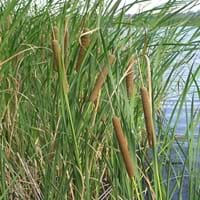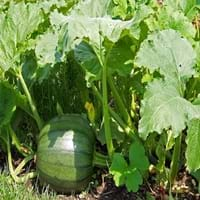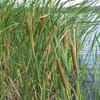Life Span
Perennial
Annual or Biennial
Origin
North America, United States, Northeastern United States, Mid-Atlantic United States, Southeastern United States, North-Central United States, Central United States, Western United States, California, Canada
South America
Types
Not Available
Arikara squash
Arikara squash
Boston marrow
Buttercup squash
Candy Roaster
Number of Varieties
Not Available
Habitat
Bog Garden, Ponds
Clay soil areas, Loamy soils
USDA Hardiness Zone
3-10
2-11
Sunset Zone
21,22
A1, A2, A3, H1, H2, 1a, 1b, 2a, 2b, 3a, 3b, 4, 5, 6, 7, 8, 9, 10, 11, 12, 13, 14, 15, 16, 17, 18, 19, 20, 21, 22, 23, 24
Habit
Thicket/Colonizing
Prostrate/Trailing
Flower Color
Light Yellow, Light Green
Yellow, Gold
Flower Color Modifier
Not Available
Bicolor
Fruit Color
Brown
Blue, Gray Green
Leaf Color in Spring
Green
Dark Green
Leaf Color in Summer
Green
Green, Dark Green
Leaf Color in Fall
Green
Green, Dark Green, Yellow green
Leaf Color in Winter
Not Available
Not Available
Leaf Shape
Flat, Narrow
Reniform
Plant Season
Summer, Fall
Fall
Sunlight
Full Sun, Partial Sun
Full Sun
Growth Rate
Fast
Very Fast
Type of Soil
Loam, Sand
Loam
The pH of Soil
Acidic, Neutral, Alkaline
Acidic, Neutral
Soil Drainage
Poorly Drained
Well drained
Bloom Time
Early Summer, Summer
Indeterminate
Tolerances
Wet Site
Drought
Where to Plant?
Ground
Ground
How to Plant?
Divison, Seedlings
Seedlings
Plant Maintenance
Medium
Medium
Watering Requirements
Needs Very high moisture
Keep the Soil well drained
In Summer
Lots of watering
Lots of watering
In Spring
Moderate
Moderate
In Winter
Average Water
Average Water
Soil pH
Acidic, Neutral, Alkaline
Acidic, Neutral
Soil Type
Loam, Sand
Loam
Soil Drainage Capacity
Poorly Drained
Well drained
Sun Exposure
Full Sun, Partial Sun
Full Sun
Pruning
Remove damaged leaves
Cut or pinch the stems, Pinch or prune as they grow to promote branching and bushiness, Remove damaged leaves, Remove dead branches, Remove dead leaves
Fertilizers
Nutrient Rich Fertilizer
All-Purpose Liquid Fertilizer, organic fertlizers, Water soluble fertilizers
Pests and Diseases
Free of serious pests and diseases
Anthracnose, Aphids, Cucumber beetles, Leaf spot, Red blotch, Spider mites, Verticillium Wilt, Whiteflies
Plant Tolerance
Drought
Heat Tolerance, Humidity
Flower Petal Number
Not Available
Single
Foliage Texture
Coarse
Coarse
Foliage Sheen
Glossy
Matte
Attracts
Wildlife
Aphids, Beetles, Flies, Spider Mites
Allergy
Mild Allergen
Not Available
Aesthetic Uses
Cut Flowers, Wild gardens
Not Available
Beauty Benefits
Not Available
Not Available
Environmental Uses
Air purification
Air purification
Medicinal Uses
anticoagulant, Diuretic, Haemostatic, Miscellany
Not Available
Part of Plant Used
Flowers, Leaves, Root, Seeds, Stem
Fruits
Other Uses
Used as a thickener in soups, Used to make biscuits, Used to produce edible oil, Used to yield a sweet syrup
Used As Food
Used As Indoor Plant
No
No
Used As Outdoor Plant
Yes
Yes
Garden Design
Dried Flower/Everlasting, Wildflower
Edible, Herb / Vegetable
Botanical Name
TYPHA angustifolia
CUCURBITA maxima 'Jarrahdale'
Common Name
Narrowleaf Cattail, Lesser Reedmace
Jarrahdale Pumpkin, Winter Pumpkin
In Hindi
Narrowleaf Cattail
Jarrahdale Pumpkin
In German
Schmalblättriger Cattail
Jarrahdale Pumpkin
In French
Narrowleaf Cattail
Jarrahdale Pumpkin
In Spanish
Espadaña de hoja estrecha
Jarrahdale Pumpkin
In Greek
στενόφυλλα Cattail
Jarrahdale Pumpkin
In Portuguese
Narrowleaf Tifa
Jarrahdale Pumpkin
In Polish
Wąskolistne Cattail
Jarrahdale Pumpkin
In Latin
Cattail glaucescens
Jarrahdale Pumpkin
Phylum
Magnoliophyta
Tracheophyta
Class
Liliopsida
Magnoliopsida
Order
Typhales
Cucurbitales
Family
Typhaceae
Cucurbitaceae
Clade
Angiosperms, Commelinids, Monocots
Angiosperms, Eudicots, Rosids
Tribe
Not Available
Not Available
Subfamily
Not Available
Not Available
Number of Species
Not Available
Season and Care of Narrowleaf Cattail and Jarrahdale Pumpkin
Season and care of Narrowleaf Cattail and Jarrahdale Pumpkin is important to know. While considering everything about Narrowleaf Cattail and Jarrahdale Pumpkin Care, growing season is an essential factor. Narrowleaf Cattail season is Summer and Fall and Jarrahdale Pumpkin season is Summer and Fall. The type of soil for Narrowleaf Cattail is Loam, Sand and for Jarrahdale Pumpkin is Loam while the PH of soil for Narrowleaf Cattail is Acidic, Neutral, Alkaline and for Jarrahdale Pumpkin is Acidic, Neutral.
Narrowleaf Cattail and Jarrahdale Pumpkin Physical Information
Narrowleaf Cattail and Jarrahdale Pumpkin physical information is very important for comparison. Narrowleaf Cattail height is 120.00 cm and width 240.00 cm whereas Jarrahdale Pumpkin height is 30.00 cm and width 300.00 cm. The color specification of Narrowleaf Cattail and Jarrahdale Pumpkin are as follows:
Narrowleaf Cattail flower color: Light Yellow and Light Green
Narrowleaf Cattail leaf color: Green
Jarrahdale Pumpkin flower color: Yellow and Gold
- Jarrahdale Pumpkin leaf color: Dark Green
Care of Narrowleaf Cattail and Jarrahdale Pumpkin
Care of Narrowleaf Cattail and Jarrahdale Pumpkin include pruning, fertilizers, watering etc. Narrowleaf Cattail pruning is done Remove damaged leaves and Jarrahdale Pumpkin pruning is done Cut or pinch the stems, Pinch or prune as they grow to promote branching and bushiness, Remove damaged leaves, Remove dead branches and Remove dead leaves. In summer Narrowleaf Cattail needs Lots of watering and in winter, it needs Average Water. Whereas, in summer Jarrahdale Pumpkin needs Lots of watering and in winter, it needs Average Water.





